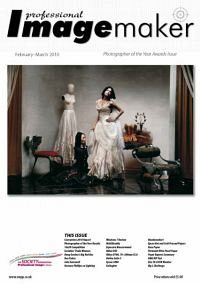articles/Lighting/whataboutlight-page2
What about the Light? - seeing is Believing - part 2 of 1 2 3 4
Published 01/02/2010
Teaching students, and we are all students no matter how long we have been at it or how accomplished we may be, lighting first needs to be simplified and we start with the one light source that needs no electrical power. Window light.
This means observing where the light is coming from and its direction, even when it is somewhat subdued. It also requires us to recognise lighting patterns, especially when we are creating portraits, because there are certain rules that we need to adhere to before we graduate to breaking them. The mask of the face should be properly lit, so that there is relatively equal light on the forehead, nose, chin and cheekbones. When we break these rules it has to be with purpose, not by accident.
A simple example of this recognition is if we were to create what I refer to as 'kitchen-table portraits'. In other words, while at the table, we see portraits that demand your camera's attention. It is seeing the light. It is the opposite of setting up a lighting set in the studio because the light cannot be moved and instead requires us to move the subject if, initially, the lighting pattern is unsatisfactory.
In the series of images shown here the light source was a 5'x3' window to the right of camera. As it is in the kitchen diner there is a degree of reflected light from the white walls and ceiling, but less than a quarter of an f-stop; its effect on the lighting pattern is negligible, but because the light was diffused it had what we describe as a 'wrap around' effect. Remember that the softer the light, the greater the coverage as its diffusion slows it down, so it can wrap around, whereas the less diffused travels faster and creates greater contrast that mostly requires a fill light or a reflector to soften the shadows.
To describe this a little better try this analogy: imagine you are driving your car at 15 mph and you come to a point where you need to make a turn. Because you are travelling at 15 mph the turn is easily made. Now imagine you come to the same point at 50 mph. Now try the turn. You likely are in trouble and may well crash the car. The 15 mph is the diffused light and the 50 mph is the harder light.
Consequently the light is unable to create the wrap around we get from the softer light that is effectively travelling slower so we get greater contrast, or if you prefer, a longer ratio from highlight to shadow.
Please Note:
There is more than one page for this Article.
You are currently on page 2
- By Norman Phillips
What about the Light? - seeing is Believing page 1 - What about the Light? - seeing is Believing page 2
- What about the Light? - seeing is Believing page 3
- What about the Light? - seeing is Believing page 4
1st Published 01/02/2010
last update 09/12/2022 15:00:19
More Lighting Articles
There are 0 days to get ready for The Society of Photographers Convention and Trade Show at The Novotel London West, Hammersmith ...
which starts on Wednesday 15th January 2025





